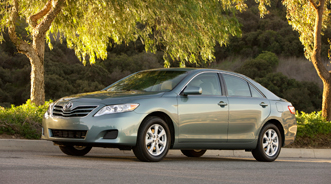As Japanese Production Returns to Full Capacity, Used Departments & Sales Will Benefit, Too

By subscribing, you agree to receive communications from Auto Remarketing and our partners in accordance with our Privacy Policy. We may share your information with select partners and sponsors who may contact you about their products and services. You may unsubscribe at any time.
TOKYO –
As positive developments on the production front for Japanese automakers roll in after months of struggles in the earthquake’s aftermath, these companies should also see some benefits within their used-vehicle and certified pre-owned operations, as well.
Toyota, for one, plans to have production at 100-percent capacity for September and is reportedly accommodating for this production ramp-up by bringing in 3,000 to 4,000 more temporary workers to its Japanese plants.
Likewise, more than 1,000 more workers are expected to brought into Honda. The automaker has said that most of its North American production will be at full speed by August.
“The return of normal production for Japanese manufacturers is a great thing for supply since NADA was expecting overall used supply to be very constrained during the second half of 2011. The return to normal production should ease the supply demand imbalance somewhat,” Jonathan Banks, a senior analyst with NADA Used Car Guide, explained to Auto Remarketing on Tuesday.
“Consumers with trade-ins are still enjoying record high trade-in values, although the peak has already occurred. With the combination of the expectation of higher incentives and historically high trade-in values, dealers should start receiving more high quality trade-ins as new-vehicle sales improve,” Banks continued.
Tom DeLuise, national TCUV/TRAC sales and operations manager for Toyota Motor Sales USA, told Auto Remarketing that the news about his automaker’s production ramp-up bodes well for Toyota’s CPO operations.
Subscribe to Auto Remarketing to stay informed and stay ahead.
By subscribing, you agree to receive communications from Auto Remarketing and our partners in accordance with our Privacy Policy. We may share your information with select partners and sponsors who may contact you about their products and services. You may unsubscribe at any time.
“As new-car availability improves, it will drive traffic to our dealers,” DeLuise said. “Increase in traffic will help both new car and certified business.”
He continued: “This will be a positive impact on TCUV business. Trades represent over 55 percent of our source of TCUV inventory — so this will be a lift for our dealers.”
Meanwhile, Richard Arca, of Edmunds.com, said a return to full production capacity could also mean a return to higher incentives.
He emphasized that the Japanese automakers will also need to provide attractive incentives — along with the production lift — to lure shoppers to the new-vehicle side and then see the rise in CPO-worthy inventory.
“If the manufacturers increase production, if they go ahead and make it easier for consumers to buy the vehicle … then quite possibly you’ll see an increase in certified pre-owned vehicles,” said Arca, who is a pricing manager with Edmunds.
Banks believes that the Japanese automakers will become “creative” with incentives to recapture some market share. And if the economy is healthy, he expects the industry sales pace to be at the 13 million mark.
Delving more into the used market, he noted: “The fundamentals for the used market are still strong with supply being relatively tight and demand expected to remain strong. This creates a good supply-demand balance for used vehicles which will keep prices strong."
Banks added that, “The new and used markets feed off of each other; and if incentives remain reasonable, the strong used-car prices will facilitate new-vehicle sales. As consumers start to substitute a new vehicle purchase instead of used driven by attractive new vehicle incentives, dealers should begin to see better availability of used vehicle inventory much like they were seeing earlier in the year.
“There is no way we can create any additional used vehicles so the prices should remain strong on used vehicles for the remainder of the year as long as manufacturers are content with a 13 million new-vehicle sales pace and don’t push incentives too high,” Banks concluded.


